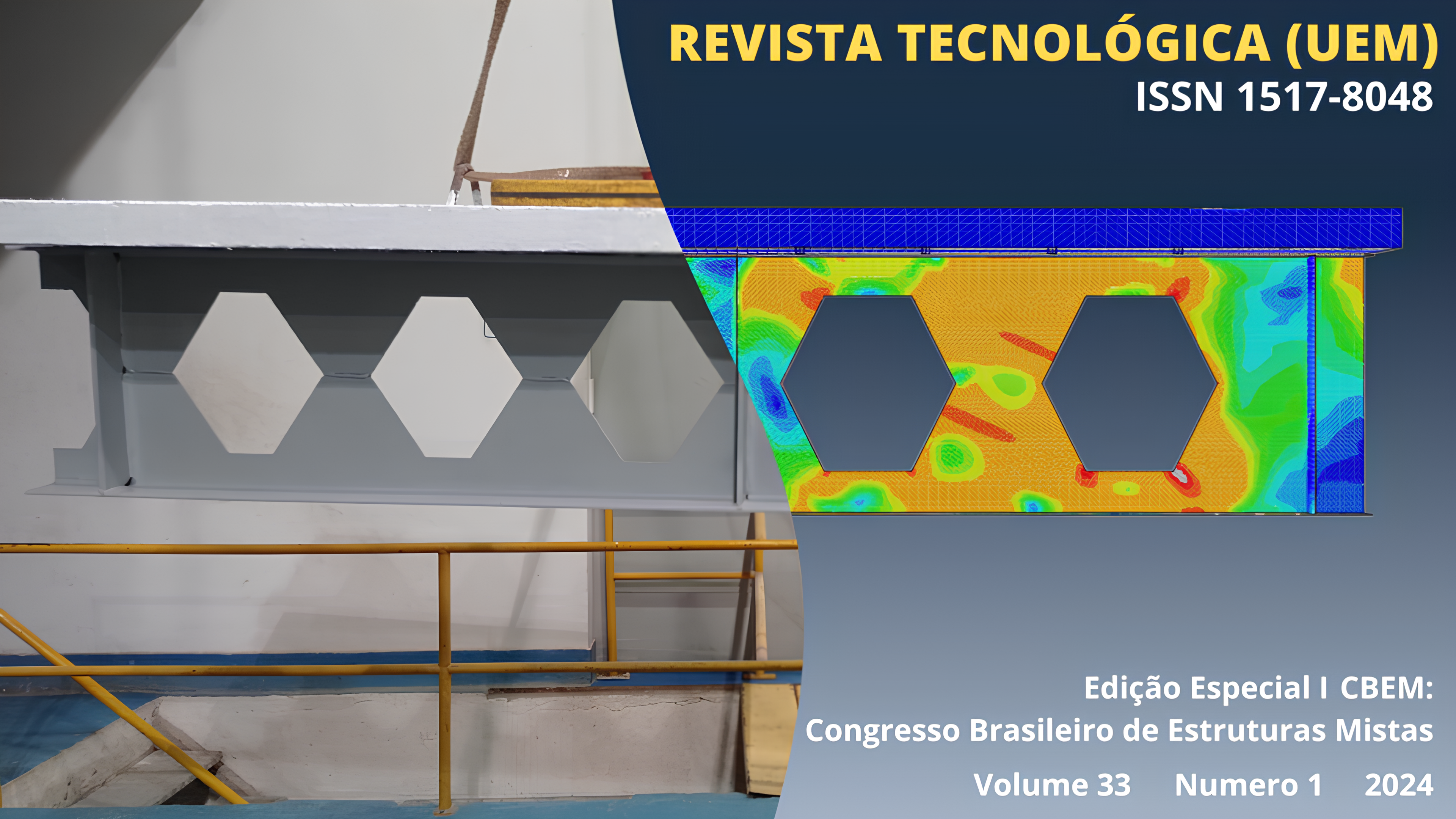ANÁLISE DE PÓS-FLAMBAGEM EM PERFIS ALVEOLARES COM FLANGES TUBULARES CARREGADOS AXIALMENTE
Resumo
Este estudo investiga o comportamento estrutural de perfis metálicos alveolares com flanges tubulares sujeitos a carga axial. A análise visa avaliar a capacidade de carga e possíveis instabilidades desses perfis. Utilizando métodos numéricos no software ABAQUS, foram examinados 18 perfis com diversas configurações geométricas, considerando também diferentes classes de resistência do aço. Os resultados mostram que o aumento na espessura do perfil resulta em um ganho de capacidade resistente, em média, de 76,6%. Perfis mais esbeltos exibiram instabilidade global, enquanto aqueles com menor esbeltez e em torno do eixo de maior inércia demonstram instabilidades locais. Além disso, o aumento na resistência mecânica do aço contribui para um ganho, em média, de 21% na resistência última do perfil.
Downloads
Referências
FERREIRA, F. P. V.; MARTINS, C. H.; DE NARDIN, S. A parametric study of steel-concrete composite beams with hollow core slabs and concrete topping. Structures, v. 28, 2020.
JI, J. et al. Nonlinear Buckling Analysis of H-Type Honeycombed Composite Column with Rectangular Concrete-Filled Steel Tube Flanges. International Journal of Steel Structures, v. 18, n. 4, 2018.
LI, G. C. et al. Axially loaded square concrete-filled steel tubular long columns made of high-strength materials: Experimental investigation, analytical behavior and design. Journal of Building Engineering, v. 58, 2022.
MENG, X.; GARDNER, L. Cross-sectional behaviour of cold-formed high strength steel circular hollow sections. Thin-Walled Structures, v. 156, 2020.
NSEIR, J. et al. Lateral torsional buckling of cellular steel beams. Structural Stability Research Council Annual Stability Conference 2012. Anais...2012.
PANEDPOJAMAN, P.; SAE-LONG, W.; CHUB-UPPAKARN, T. Cellular beam design for resistance to inelastic lateral-torsional buckling. Thin-Walled Structures, v. 99, 2016.
PANEDPOJAMAN, P.; SAE-LONG, W.; THEPCHATRI, T. Design of cellular beam-columns about the major axis. Engineering Structures, v. 236, 2021.
TAO, Z.; WANG, X.-Q.; UY, B. Stress-Strain Curves of Structural and Reinforcing Steels after Exposure to Elevated Temperatures. Journal of Materials in Civil Engineering, v. 25, n. 9, 2013.
Os autores podem manter os direitos autorais pelo seu trabalho, mas repassam direitos de primeira publicação à revista. A revista poderá usar o trabalho para fins não-comerciais, incluindo direito de enviar o trabalho em bases de dados de Acesso Livre.











